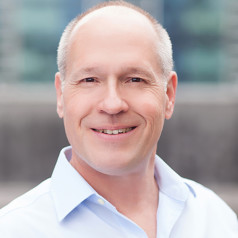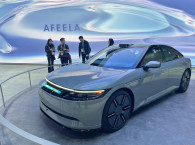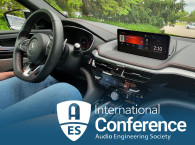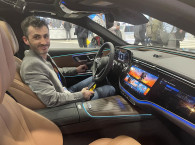Photos by Pierre Bendayan (AES) and J. Martins (audioXpress)
The unofficial count was 330 attendees, with a waiting list of dozens more for the sold-out 5th Audio Engineering Society (AES) Automotive Audio Conference at the spectacular Geely Uni3 Center, in the historic town of Gothenburg, Sweden. I am proud to have been a part of the planning committee for all our automotive conferences and I was the vice-chair of this event. This one was one of the biggest, most well-attended AES conference, let alone Automotive Conference.
Watching the 20-plus line of cars pull into the Uni 3's “theater” exhibit space with its high, vaulted, ceiling, was profound, knowing that at the first AES Automotive Audio Conference (now called 0th, because there have been six in total), there were three cars and 50 attendees. The humble 0th in June 2009 at the Ritz Carlton (now "The Henry") in Dearborn, MI, may have had less than a handful of cars available in the small circular drive outside the Ballroom in the late afternoon of the last day, but the ideas then were as big and as prescient as those in Gothenburg, 15 years later.
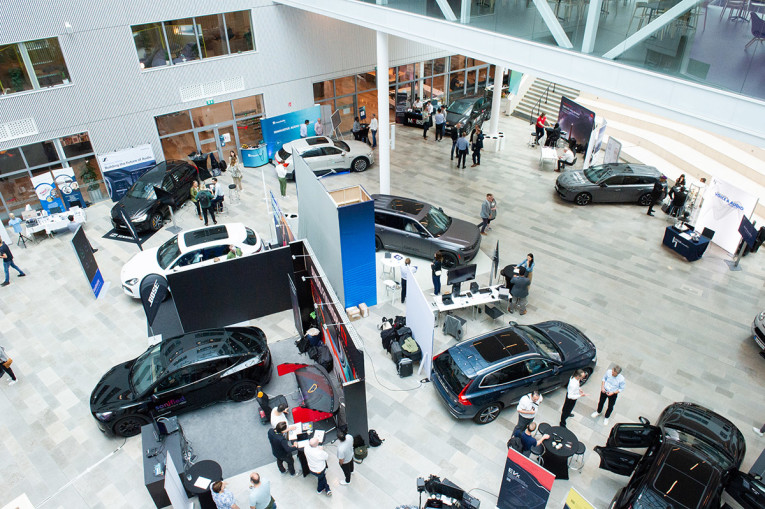
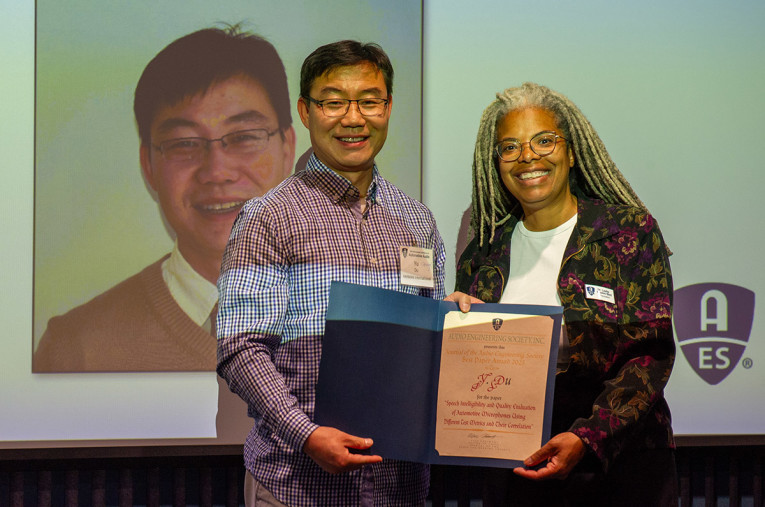
In 2009, I witnessed the Art and Science of Automotive Audio Evaluations, Wideband Speech Communication, Natural Speech Dialog Initiation, Signal Processing of Multichannel Sound, The Very Small Room Acoustics Modeling of a Car Cabin, Advances in Microphones, Loudspeakers, and Amplifiers, Mobile Internet Audio, Digital Audio Networks, Active Noise Control for Automobiles, and Designing Interior Audio Cues for Hybrid and Electric Vehicles, which were all on the program.
It had been 20 years since the first branded audio system had been put into an OEM-built automobile. The growth in the quality and the technology was evident then, and the vision for what would be the course for the next 15 to 20 years was becoming clear. All these technologies were in the cradle, waiting for the next OEM vehicle development and production cycle, so they could emerge. In June of 2024 in Gothenburg, I saw the maturity and overwhelming relevance of Automotive Audio in the modern state of cutting-edge technology, and how it's taking huge strides.
We added to the event in Gothenburg a professional-grade immersive audio listening room coordinated by Thomas Lund and his team at Genelec. It provided a reference for what could be heard in many of the demonstration vehicles. Stefan Bock and Morten Lindberg also shared insights and education on immersive audio. The room was available throughout the days of the conference.

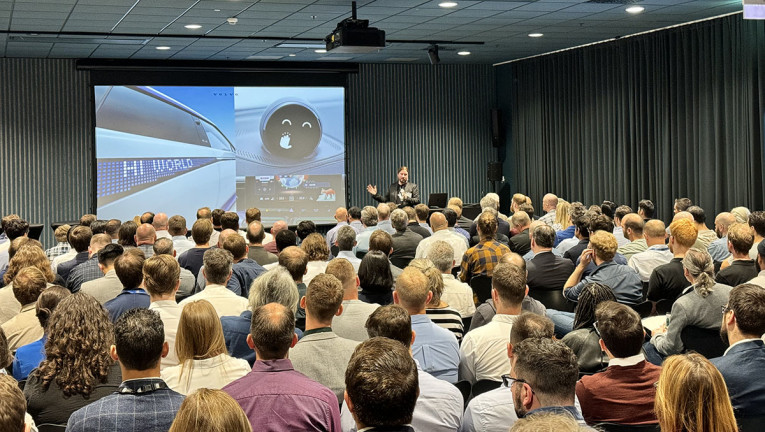

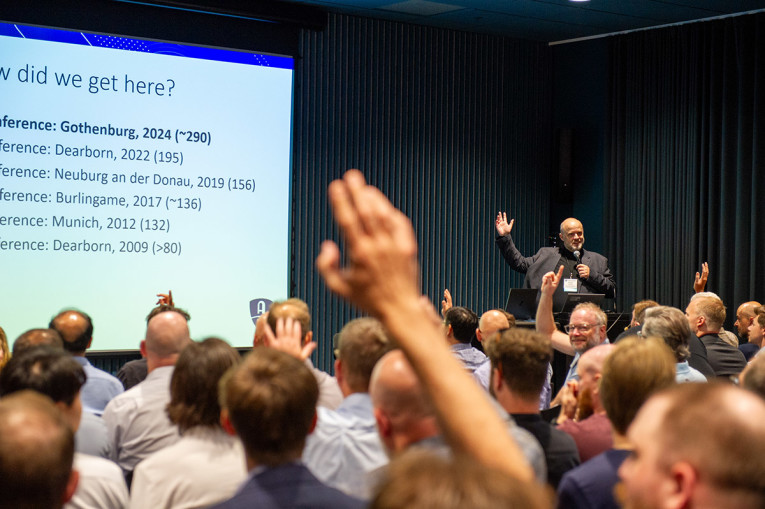
The focus of the conference was the technical paper presentations and the workshop and tutorial panels in the auditorium down the hall from the immersive audio room and next door to the exhibit hall. The problem we have faced each time with the Automotive Audio conferences is how to give all the attendees the opportunity to listen to and observe the technical presentations, while also being able to experience the demonstrations and exhibits. With each conference, the problem grows.
This year, there was space in the auditorium for 200 of the 300-plus attendees. But this year’s conference also provided a large digital screen in the exhibit space and wireless earphones. The exhibitors and those who couldn’t sit in the auditorium could watch and listen from anywhere in the venue.
The opening keynote address, given by Jonatan Ewald of Volvo, discussed trends in automotive audio from an OEM perspective, and neatly contextualized the wider topics that would reappear throughout the day: Software-Defined Vehicles, software platforms, and the vehicle “ecosystem” of hardware and software in which multiple suppliers and OEMs interact. Jonatan’s keynote was a reference point for many of the presenters throughout the conference.
José María Marín from Blackberry QNX set the stage talking about the software-defined vehicle age, where audio becomes a new playing field for innovation and differentiation. How OEMs now require advanced audio SW platforms that allow them to develop, deploy, and upgrade audio throughout the vehicle’s lifecycle, and what that means to new business models and opportunity. Paul Beckmann from DSP Concepts followed up with "Leveraging Multiple Threads and Core for Advance Automotive Audio Processing."


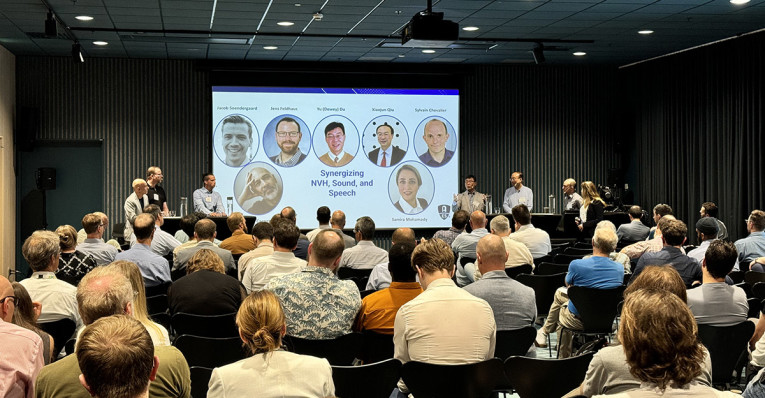
Later the same day, many of the software providers, from DSP Concepts, QNX, Harman, Dirac, and Sennheiser sat on the same panel to discuss "What is Software Architecture, Platform, and Use.” It was a fundamental, but complicated discussion about the current state of collaborative system development, which is equally fundamental and complicated.
In that session, Paul Beckmann launched a fascinating quest for upcoming years, proposing a new initiative around Audio Processing Units with standard application facing APIs, creating a Third Party IP Ecosystem around purpose-built chips for audio acceleration. A project that he compared to similar successful efforts for graphics that took place earlier on in the computer industry.
The day continued to its conclusion with "Validation of simulations of vehicle loudspeakers in high frequencies," "Audio speech source separation and enhancement," and "Loudspeaker control using neural networks."

The second day began with a keynote from Dr. Xiajun Qiu from Huawei on active noise control in automotive cabins. This set the stage for a day of technical sessions focused on the vehicle sound design and on how sound is perceived in a vehicle. Topics ranged from the transferring of personalized sound profiles from consumer products to automotive audio and comparisons of virtual height rendering.
A second-day standout for me was Gilbert Soulodre of Camden Labs, who gave an introductory talk on sound design for engine sound synthesis, and what software-related problems still need to be addressed here. The afternoon was dedicated to NVH, Sound, and Speech as well as additional studies on our directional perception of virtual sources and "the perceived spatial extent of active noise control."
The evening of the second day finished with dinner, drinks, and live music, and the chance to finish conversations and start new ones. There was excitement for another conference already, which we are beginning to plan, with a future possibility of adding a conference in Asia.
The excitement surrounding what lies ahead for the conference carried over into the next morning. But there remained a full third day to witness and experience. The keynote for the closing day of the conference was given by Jan Skoglund of Google. His topic was “Bringing immersive audio to the masses,” centering around open formats for all types of developers of audio and algorithms to enjoy.
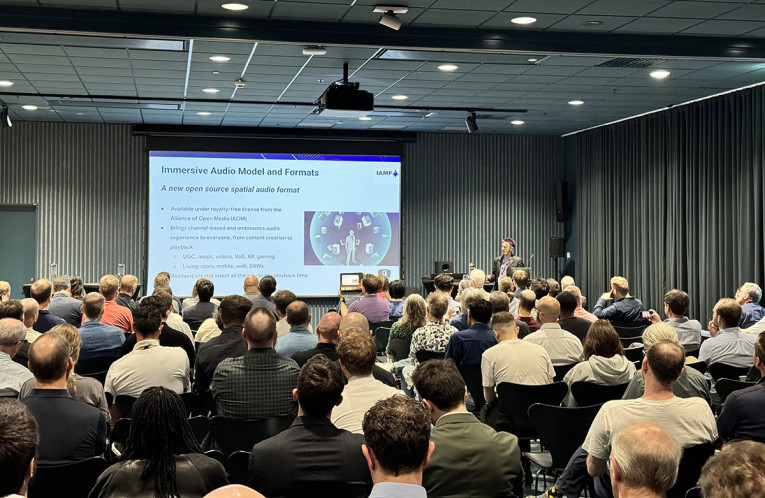
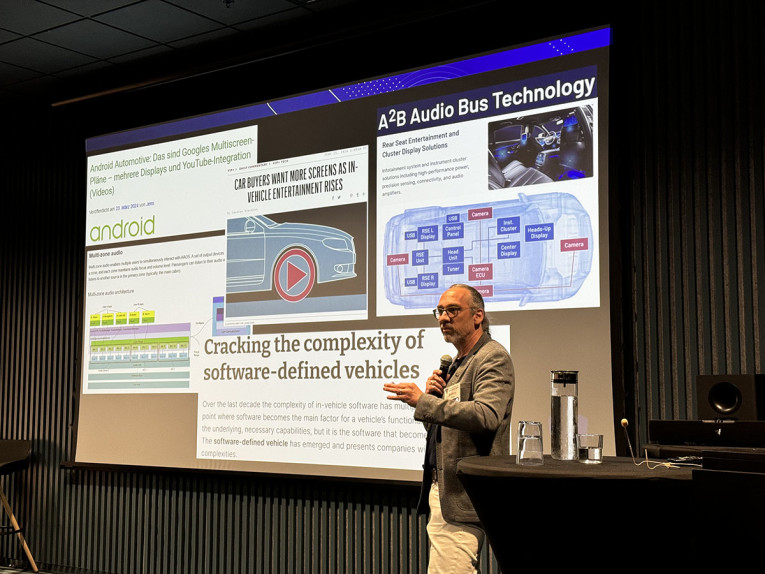
Skoglund was followed up by Andreas Ehret of Dolby, to discuss the evolution of Dolby's technologies for vehicles, "Automotive Car Industry 2024: Fever Pitch Times for Engineers." With many of the demonstrations at this AES conference showcasing the virtues of immersive audio, using Dolby Atmos content as a reference, this presentation focused on the auto industry’s roadmap and how audio needs to keep up with the accelerating pace of innovation in content, use cases, and system complexity. Interestingly, if any perspective was needed, attendees only had to proceed to one of the remaining presentations in the Genelec Forrest room, and experience amazing immersive sound mixes.
The presentations flowed during the final day: "Virtual sensing strategies for active control of road noise in an EV," "In-situ Measurement and Evaluation of an Automotive Audio Haptic System," "Empirical Evaluation of in-car Acoustic Measurements for the Sports Car Scenario," "Demystifying Crosstalk Cancellation for Spatial and Personal Automotive Audio," "In-vehicle Audio Performance Envelopes – Definitions, Key Factors, and Value to Design," and the Automotive Audio Technical Committee’s White Paper "In-car Acoustic Measurements," following up on tips and challenges in the measurement techniques.
At the end of the day, underlining the reality of software development, Neal Michie from PACE Anti-Piracy talked about protecting software intellectual property, the risks of reverse engineering, and practical steps to protect the value of a developer’s algorithms.
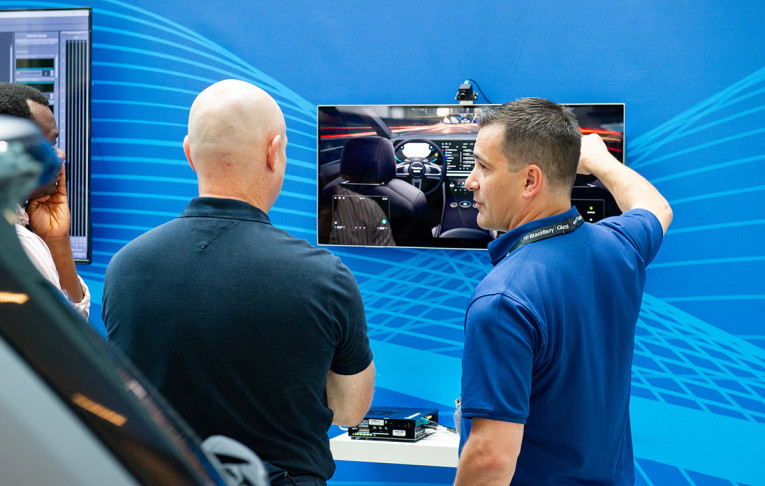
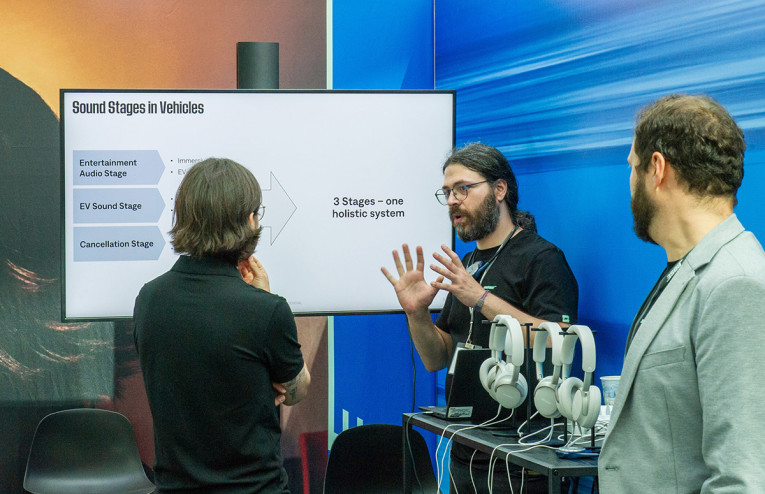

The three conference days were graced with beautiful Spring sunshine in Gothenburg, inspiring the temptation to explore the vibrant city life, just a ferry ride across the river from the Uni3 center. The third day brought rain overnight. Gothenburg wasn't necessarily sad to see us go. We were a joyous group and happy tenants of the Uni3 center. The weather simply reminded everyone about the start of another cycle.
All in all, looking back, it was a quantum leap in many ways from the dreams we had in 2009, and beyond the imagination from those in 1983. Automotive audio is still a vital part of the automotive industry's future and the future of the audio industry. Those of us who are part of the Audio Engineering Society and work in the automotive audio industry don’t always know if our work is noticed or appreciated. Every two years this group of gypsies reunites with a sense of community. There is a sense of joy in connecting for a long weekend, assessing what we have done individually and together, to know how and what it is - and then, we go each our own way, to meet up again down the road.



This article was originally published in The Audio Voice newsletter, (#475), July 11, 2024.


